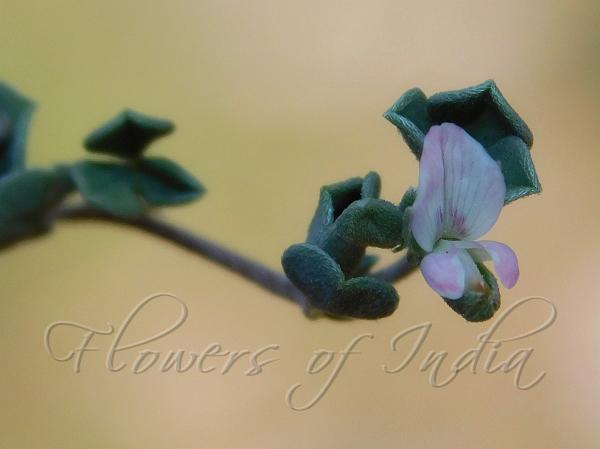|
| Rosy Bush Pea |
|

|

| File size | 504176 |
| Original date | 6/19/23 3:48 PM |
| Resolution | 3218 x 2411 |
| Flash | Flash fired |
| Focal length | 41.3mm |
| Exposure time | 1/500s |
| Aperture | 5.6 |
| Focus Distance | |
| Metering Mode | Multi-segment |
| Camera make | NIKON |
| Camera model | COOLPIX B500 |
| Sensor type |
|
|
|
|
Photo: |
Botanical name: Argyrolobium roseum Family: Fabaceae (Pea family)
Synonyms: Cytisus roseus, Genista rosea
Synonyms: Cytisus roseus, Genista rosea
Rosy Bush Pea is a prostrate herb with stem round,
hairy, much branched. Flowers are borne in a 1-4-flowered stalked
raceme, flower-cluster-stalk 0.4- 4.0 cm. Flowers are about 5 mm long,
pinkish to red. Sepal-cup about 4.5-5.0 mm long, two-lipped, hairy. Bract are
about 1.5 mm long. Stipules are about 1.5-2 mm, free lateral. Leaves
are trifoliolate, leaf-stalk about 3-10 mm long, leaflet-stalk less
than 1 mm. Leaflets are about 4-13 mm long, obovate, blunt, hairless
above, hairy below. Pod is about 0.8-3.5 cm long, 2.5-3 mm broad,
3-15-seeded, hairy. Rosy Bush Pea is found in W. Asia (Iran, Iraq), to
the Himalaya, from Kashmir to Nepal, at altitudes of 1900-3200 m.
Medicinal uses: Rosy Bush Pea is used in
several traditional medicines to treat jaundice, hyperglycemia,
diabetes, ulcers, diarrhea, liver disorders, and stomach disorders. It
is also believed to have some aphrodisiac properties. In Himachal
Pradesh Makhni Booti is primarily used for treating skin diseases, and
stomach and liver disorders.
Rosy Bush Pea is used in
several traditional medicines to treat jaundice, hyperglycemia,
diabetes, ulcers, diarrhea, liver disorders, and stomach disorders. It
is also believed to have some aphrodisiac properties. In Himachal
Pradesh Makhni Booti is primarily used for treating skin diseases, and
stomach and liver disorders.
Medicinal uses:
 Rosy Bush Pea is used in
several traditional medicines to treat jaundice, hyperglycemia,
diabetes, ulcers, diarrhea, liver disorders, and stomach disorders. It
is also believed to have some aphrodisiac properties. In Himachal
Pradesh Makhni Booti is primarily used for treating skin diseases, and
stomach and liver disorders.
Rosy Bush Pea is used in
several traditional medicines to treat jaundice, hyperglycemia,
diabetes, ulcers, diarrhea, liver disorders, and stomach disorders. It
is also believed to have some aphrodisiac properties. In Himachal
Pradesh Makhni Booti is primarily used for treating skin diseases, and
stomach and liver disorders. | Identification credit: Nishant Chauhan | Photographed in Kangra, Himachal Pradesh. |
• Is this flower misidentified? If yes,